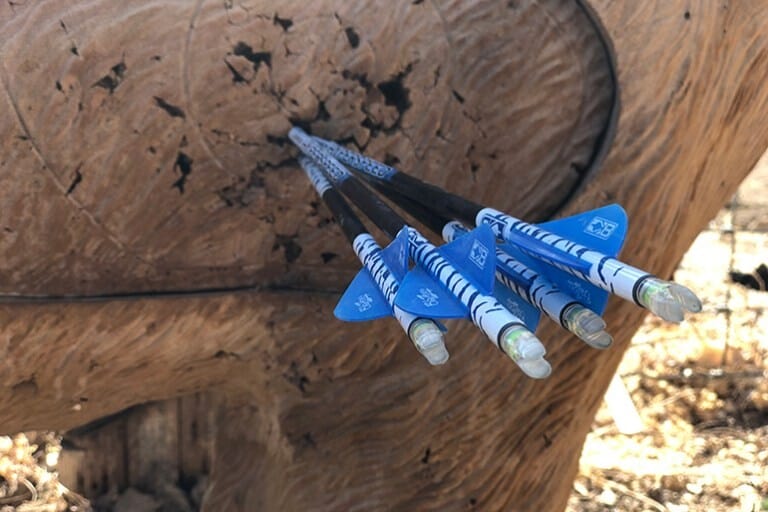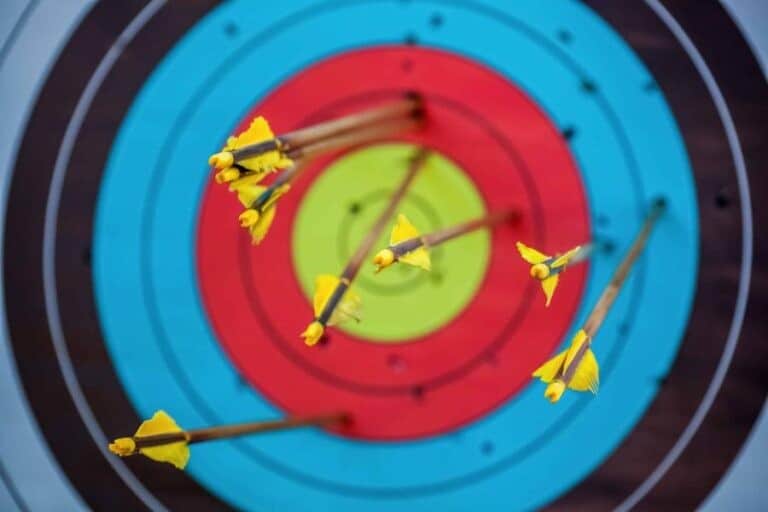Mechanical or fixed blade broadheads, which is better? This is a never-ending battle between bowhunters. Although there are plenty of comparisons online about all of the different qualities of mechanical and fixed blade broadheads, I think accuracy is one of the most important elements overall. Accuracy is one of the main things mechanical broadheads have going for them, but it’s not like we are guessing every time we shoot a fixed blade broadhead. So if we can also be precise with fixed blades, what is all the talk about mechanicals being superior in terms of accuracy?
A Quick Glance
At distances of 30 or fewer yards, mechanical broadheads will be as accurate as your field points. Mechanical broadheads can also solve many complicated arrow flight issues for the average hunter. Although with a well-tuned bow, there is no significant accuracy advantage over a fixed blade broadhead (other variables held constant).
How Mechanical Broadheads Work
For starters, broadheads come in all shapes and sizes. Every company tries to do something a little different from everyone else. In general, a mechanical broadhead works by deploying a set of moving blades on impact with the target. Because of this, mechanicals are able to keep a slender profile when they are flying through the air, then at impact, they turn into two-inch razor blades ripping through your target.
You can see here how the same broadhead looks before and after it expands. From a physics standpoint, it would be much more difficult to hit what you were aiming at if your broadhead was shaped like the opened position all the time. It would move your arrow around drastically during flight because of the way that the air would push on the quickly rotating broadhead. Coupled with the way your arrow flexes up and down during flight, there are a lot of opportunities for drag on the broadhead to mess up your flight pattern.
This is the main reason that mechanical broadheads are able to have bigger entry holes and cut more than fixed broadheads. Fixed heads have to balance between cutting and keeping the head aerodynamically insignificant thus preventing the arrow from moving around erratically. It is not uncommon to see mechanical broadheads produce a two-inch entry hole, while fixed blades usually produce about a hole about an inch wide.
Mechanical Broadheads Fly Like Field Points Right?
One big thing thrown around about mechanical broadheads is that they fly just like your field points. If everyone is saying it, it must be true, right? Well yes and no. The truth about this statement is that mechanicals fly very similar to field points if you are not shooting very far. Granted, most bowhunters are not shooting too much farther than this statement allows. Plus if we go with the classic pie plate analogy, you would still be able to hit a pie plate with a mechanical broadhead aiming the same way you would with a field point out to about 50 yards.

At ranges of 20-30 yards, you should see no difference between field points and mechanical broadheads. This is the range most whitetails are harvested with a bow so it is no surprise that the theory of them flying the same became widespread. Although when you back up to 40 or 50 yards, you could see a drop of anywhere between 1 to 4 inches. Although if you are aiming for the lungs, a drop like that does not matter very much. It goes without saying that any difference between the field point and mechanical broadhead will be emphasized at longer ranges.
Eliminating Arrow Planing/Spiraling
One very aggravating phenomenon I had to deal with when I started bow hunting was planing. I could shoot my field points all day long and wear the middle of my target out, but as soon as I tried out a fixed blade broadhead, my arrows started flying all over the place.
Planing is when your arrow starts to fly in a spiral pattern instead of straight. There are plenty of things that can cause planing, and since the world of archery is very complicated, a lot of times it is easier for the average sportsman to put a bandaid on the problem instead of finding the root cause.
The issue could be that you could have too high of an arrow spine for your broadheads, there could be an issue with your broadheads, you may have to tune your bow, or a number of other things could be going on. Most of these things can be complicated (particularly for a beginner) and expensive to fix, especially if you need to go to a bow shop.

OR, if you are not having a problem with field points, you can try out our lord and savior, which is the mechanical broadhead. Like I mentioned before, under 40 yards they should fly very similarly to a field point and you will not have to deal with planing/spiraling. Although if you are still having problems, you may want to go to a bow shop and get everything checked out.
Honestly, all of this boils down to how meticulous you are about your bow. If you are the guy that wants to have their own bow workshop in the garage and play with every variable there is on your bow until you can punch the same dime-sized hole over and over at 70 yards, then this bandaid fix is probably not for you. Although if you are the guy that just wants to get in the stand and bow hunt, this could be a fix to your very annoying planing problem.
Do You Have to Tune Mechanical Broadheads?
Typically no, you do not need to practice with or adjust mechanical broadheads the way you do fixed blades. It is all plug and play, at least that’s what everyone says. Personally, I would always suggest shooting the broadheads you plan on taking in the woods at least once or twice to make sure everything is working correctly.
In recent years, manufacturers have started making practice heads that are constructed the same way as the regular mechanical broadheads, but they do not open. A normal mechanical broadhead may break when it hits a target, and if it does not break, you have to replace the o-ring or rubber band that keeps the blades held down during flight after each shot. You can also try sacrificing a broadhead from your pack, and making it to where it does not open. This way you effectively have a practice head that you can shoot time and time again.
Here is an interesting field test of some popular mechanical broadheads by GrandView outdoors.
If you are having trouble with your expandables not flying correctly, here are a few things you can check:
- Make sure the o-ring or rubber band is in the right place and is functioning correctly, or try replacing it with a small bit of scotch tape
- Inspect the broadhead to make sure it is not broken.
- Make sure the small screws in your expandible are not loose.
Quick Tip: If you are having problems with flight, you should also mark your arrows and take note of how each of them fly. Your problem may be in the arrow and not the broadhead.
Conclusion
To wrap it all up, if you are having accuracy problems, a mechanical broadhead may be the way to go. As long as you are not shooting super far, they fly remarkably close to your field points. This is a lifesaver if you have been having trouble with your fixed blade heads planing and throwing off your shot. While you could spend hours or hundreds of dollars tuning your bow and getting it perfect for fixed broadheads, a faster and cheaper fix is to throw on a mechanical broadhead. Although, if you are not having problems with your setup, there is not much difference in terms of accuracy between the two styles. They do differ in many other aspects and there are good arguments on both sides, but mechanical broadheads definitely have a unique place in bowhunting.
